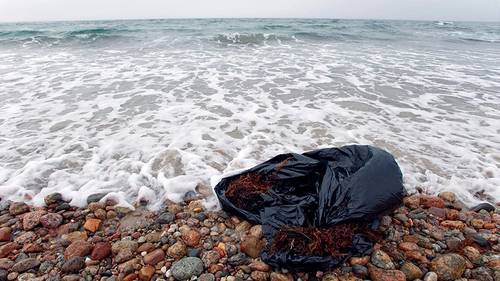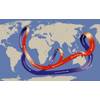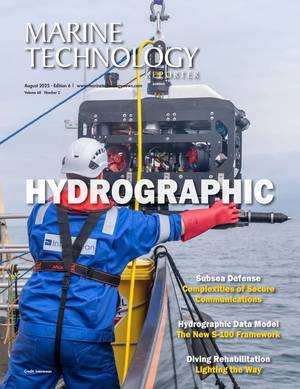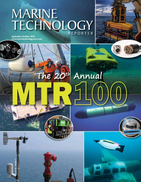New Report Emphasizes Dangers of Plastic Pollution, Announces Global Monitoring System

Plastic waste is ubiquitous in the global environment. A new report highlights plastic pollution as a grave and growing danger to health (Tom Kleindinst © Woods Hole Oceanographic Institution)
As ministers and diplomats arrive in Geneva, Switzerland, for a final round of talks to conclude a UN-backed global plastics treaty, a new report published in the British medical journal The Lancet issues a stark warning: Plastic pollution is a grave and growing danger to human and planetary health.
The report, which includes co-authors from the Woods Hole Oceanographic Institution’s (WHOI) Microplastics team, provides the most up-to-date assessment of the links between human health and plastic pollution across the full life cycle of plastic. A new monitoring system announced at the same time offers a way to track a suite of scientifically relevant indicators in order to quantify the human health impacts of plastics.
While the impacts of plastic pollution on human health and the environment are growing, the report finds, increasing harm due to plastics is not inevitable. UN Member States will gather in Geneva, Switzerland from August 5-14, 2025, for the expected final round of talks to conclude a global plastics treaty to end plastic pollution. The mandate for these negotiations is to develop an international legally binding instrument on plastic pollution, including in the marine environment, based on a comprehensive approach that addresses the full complexity of plastics in the environment.
An estimated 8 billion metric tons of plastic waste now pollute the planet. Micro- and nano-plastic particles and multiple plastic chemicals are found in the most remote reaches of the environment and in the bodies of marine and terrestrial species worldwide, including humans. The new report chronicles the human health impacts of plastics and plastic pollution from infancy to old age, and highlights the significant health-related economic costs.
Coincident with the expected finalization of the global plastics treaty, the report also announces the launch of an independent, health-focused global monitoring system on plastics: The Lancet Countdown on Health and Plastics inspired by the model and impact of the Lancet Countdown on Health and Climate Change.
The new Countdown will identify and regularly report on a suite of scientifically meaningful and geographically and temporally representative indicators across all stages of the plastic life cycle, and track progress towards minimizing exposures and mitigating human health impacts. In doing so, the Countdown will provide independent data to inform decision-making for the benefit of public health. It will also develop and track indicators across four domains: Production and Emissions, Exposures, Health Impacts, and Interventions and Engagement.
“We know a great deal about the range and severity of the health and environmental impacts of plastic pollution across the full life cycle of plastic,” said Prof. Philip Landrigan, MD, a paediatrician and epidemiologist, Director of the Global Observatory on Planetary Health at Boston College, and the lead author of the new report in The Lancet. “These impacts fall most heavily on vulnerable populations, especially infants and children. They result in huge economic costs to society. It is incumbent on us to act in response. To those meeting in Geneva: please take up the challenge and the opportunity of finding the common ground that will enable meaningful and effective international cooperation in response to this global crisis.”
The Lancet Countdown on Health and Plastic was funded primarily by the Minderoo Foundation. Additional funding and in-kind support are provided by Boston College, the Centre Scientifique de Monaco and Heidelberg University, and two workshops held to develop the Countdown were supported by the Centre Scientifique de Monaco and The March Foundation, in conjunction with the Woods Hole Oceanographic Institution. Minderoo, including any of its benefactors, Boston College, the Centre Scientifique de Monaco, and Heidelberg University, did not have any influence over the writing of the manuscript or the decision to submit it for publication.













 August 2025
August 2025



